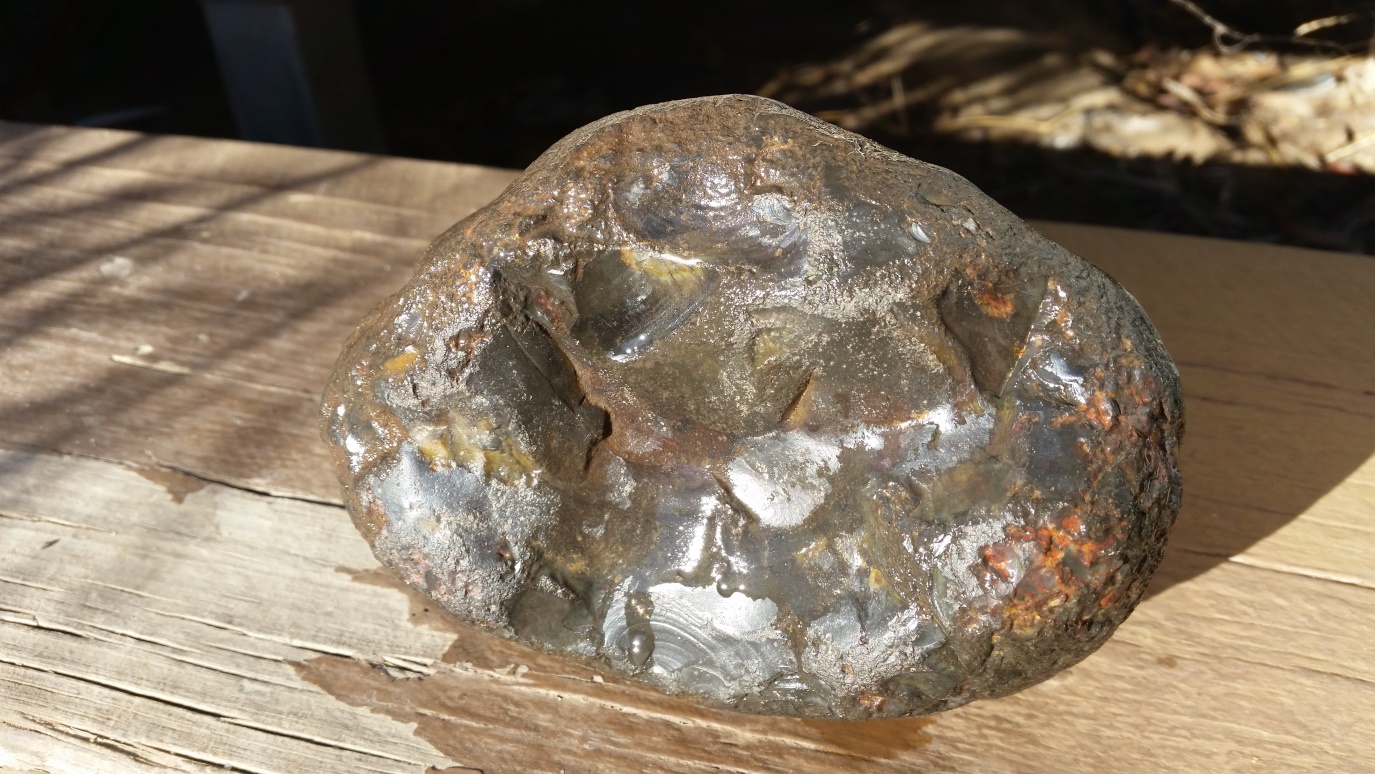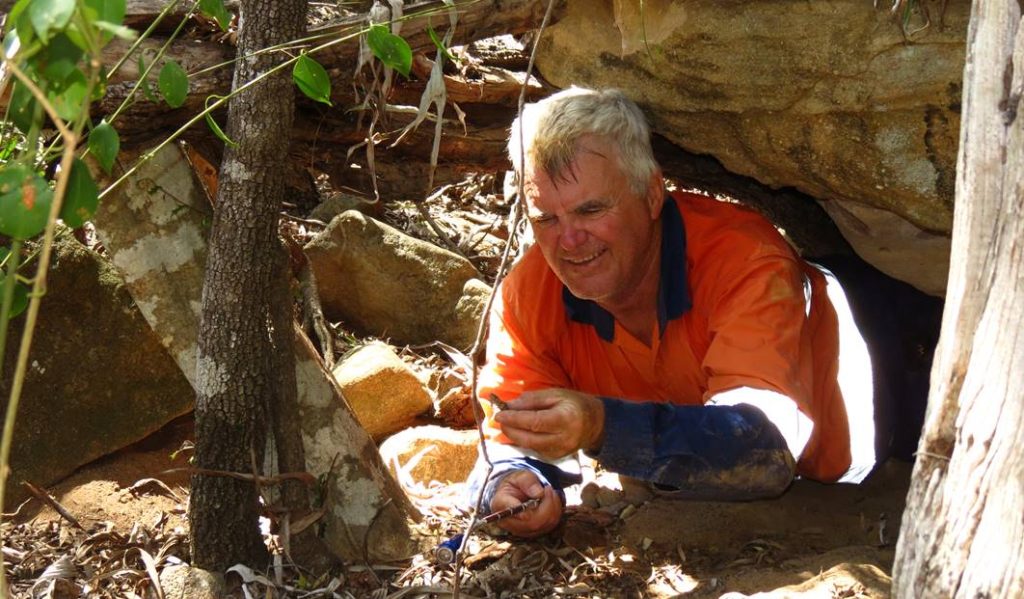
This rock, about the size of a rockmelon and weighing 1.76 kilograms, is made of black glass. It was found in the Roma district recently. One of our friends brought it to the office recently and it’s got us scratching our heads. Part of the rock has been broken away and that’s where we can see the glassy interior. Even though this happened a long time ago (the sharp edges are all worn down) the tell-tale feature of glass is there – what’s called conchoidal fracturing produces the distinctive scallops on the surface, similar to those you see on a broken bottle or window pane.
Some internet research suggests three possible scenarios for the origin of this rock. It may have formed from material present on Earth at a meteor impact site, been thrown a long way from such an impact or alternatively it may be a by-product of volcanic activity.
The meteor angle is pretty amazing. When a large meteorite hits our planet, as they have done many times in the distant past, the heat and pressure generated on impact melts the surrounding rocks. Some of this material stays behind at the edge of the impact crater. Other blobs of molten Earth rock are thrown skyward. As the blobs fly through the atmosphere, cooling quickly to form glass as they go, they form a variety of shapes. While some are simply rounded, other shapes include dumb-bells, rounded rocks with drawn-out tails, and some with a raised rim around them that make them look like the classic ‘flying saucer’ of science fiction. These objects are collectively called tektites.
World-wide, there are several locations where tektites are common. Australia is one of those places. According to the Australian Museum website, about 100,000 tektites have been found here so far, across a wide swathe of the continent south of 24° degrees latitude – Roma is at 26°. They are thought to be 610,000 to 750,000 years old. Many tektites have been found in Queensland. A specimen from the Darling Downs was given to Charles Darwin when he visited Sydney in 1836.
There’s a theory that these Australian tektites were flung from the impact of a meteorite strike in South-east Asia not far from Phnom Penh, the Cambodian capital. A very large lake near there is thought to be what remains of the impact crater. The energy involved in this process is mind-blowing. Analysis of gas bubbles in tektites suggests the bubbles formed at up to 32 kilometres altitude. Roma is about 6,400 kilometres from Phnom Penh. Think about that flight for a minute and hope you or your house isn’t ever in a tektite’s path!
There’s a problem with identifying our rock as a tektite. It’s possibly too big. Australian tektites seem to be generally in the range of less than 1 gram up to about 400 grams. Our rock weighs over four times that maximum. But…some South-east Asian tektites weighed 15 kg! So size alone can’t definitely rule it out.
Maybe it was formed at the site of an impact? Unfortunately, so far no-one has found evidence of a meteor strike nearby but that doesn’t mean it hasn’t happened. In 2015 researchers claimed to have found the largest impact zone ever found on Earth, deep underground in Central Australia. The zone – which was over 400 kilometres wide! – extended into western Queensland and is thought to have occurred over 300 million years ago. The evidence is buried 3 kilometres deep. Another possible impact of roughly the same age is known from near Winton. Could these have been the source of our rock?
Our third possibility is that it is not derived from meteor impact, but is a volcanic glass called obsidian. Occurrences of obsidian are rare but scattered through eastern Australia. In our part of Queensland outcrops are known near Eidsvold and in the Peak Range north of Emerald. Volcanic activity was once widespread in what is now Roma and surrounds, with very extensive lava flows. Evidence of these is present as basalt-capped hills in a wide area around the Carnarvon Range and its offshoots. Volcanism further east produced mountains mostly long since eroded away. Our rock is rounded, suggesting that it has been worked on by water. Could it have been transported in a high-energy stream from its birthplace in these mountains?
So, is our rock meteor spawn or obsidian? According to the Australian Museum, tektites can be distinguished from obsidian by the lack of water in the former. Application of ‘strong heat’ will force water from obsidian. So far we haven’t worked out how this is done but it’s probably more complicated than turning an oxy flame on the rock and watching for steam.
Do you have any glassy rocks at your place?
By Richard Johnson, Senior Ecologist and Tour Guide, Boobook


